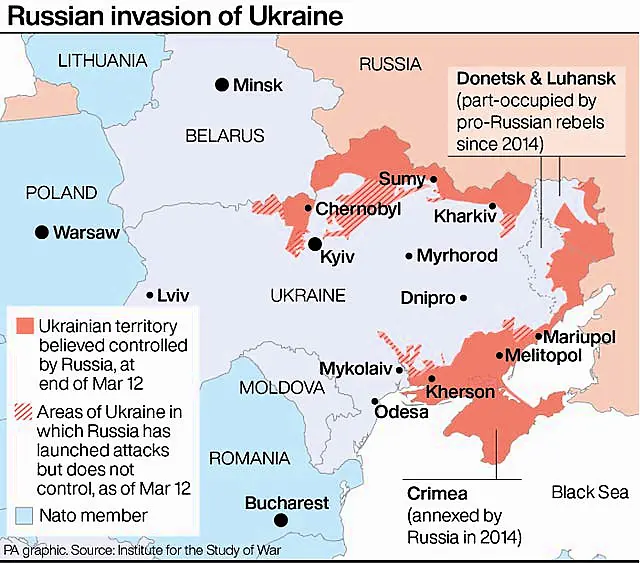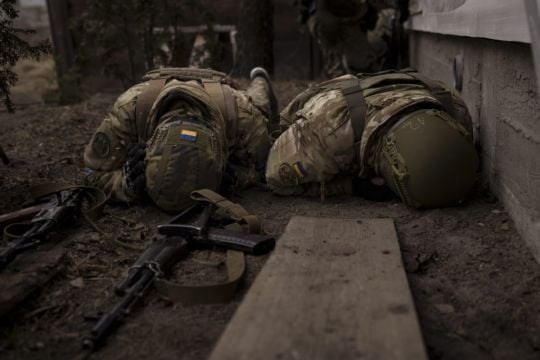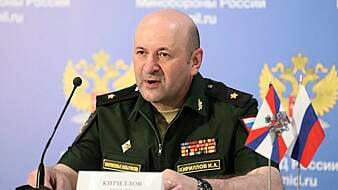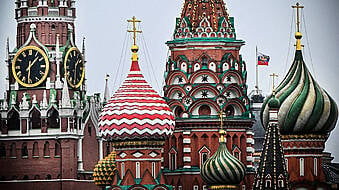Waves of Russian missiles pounded a military training base in western Ukraine on Sunday, killing 35 people in an attack on a facility that served as a crucial hub for co-operation between Ukraine and the Nato countries supporting it in its defence against Moscow’s grinding assault.
More than 30 Russian cruise missiles targeted the sprawling facility, which lies not far from the border with Nato member Poland and that has long been used to train Ukrainian military personnel, often with instructors from the US and other countries in the western alliance.
Poland is also a transit route for western military aid to Ukraine, and the strikes followed Moscow’s threats to target these shipments.
An attack so close to the border was heavy with symbolism in a conflict that has revived old Cold War rivalries that gave birth to Nato and threatened to rewrite the current global security order.
Since Russia’s invasion more than two weeks ago, at least 596 civilians have been killed, according to the UN, although it believes the true toll is much higher. Millions more have fled their homes amid the largest land conflict in Europe since the Second World War.
Despite its superior firepower, Russia has struggled in its advance across Ukraine, in the face of stiffer-than-expected resistance, bolstered by western weapons support.
Instead, Russian forces have besieged several cities and pummelled them with strikes, hitting two dozen medical facilities and leading to a series of humanitarian crises.

Many civilians have been caught in the barrage, and Ukraine’s prosecutor general’s office said on Sunday that at least 85 children had been killed.
An American journalist was killed and another wounded when their car was fired upon at a Russian checkpoint on Sunday, police said.
Meanwhile, US president Joe Biden is sending his national security adviser to Rome to meet with a Chinese official on Monday amid concerns that country is amplifying Russian disinformation, and Pope Francis called for peace.
The training base that was attacked is near Yavoriv, less than 15 miles (25km) from the Polish border and appears to be the westernmost target struck during Russia’s 18-day invasion.
The base has hosted international Nato drills and a senior Nato official, Admiral Rob Bauer, previously hailed it as embodying “the spirit of military co-operation” between Ukraine and international forces.
As such, the site is a potent symbol of Russia’s longstanding concerns that the 30-member western military alliance is a threat to Moscow by operating so close to its territory.
Nato denies that it poses any threat, but Russia has repeatedly demanded Ukraine drop its ambitions of joining the alliance as a prerequisite for ending the war.
Lviv governor Maksym Kozytskyi said most of the Russian missiles fired on Sunday “were shot down because the air defence system worked”. Those that got through killed at least 35 people and wounded 134, he said.

Russian fighters also fired at the airport in the western city of Ivano-Frankivsk, which is less than 94 miles (150km) north of Romania and 155 miles (250km) from Hungary, countries that also are Nato allies.
Nato said on Sunday that it did not currently have any personnel in Ukraine, although the US has increased the number of American troops deployed to Poland.
White House national security adviser Jake Sullivan said the West would respond if Russia’s armaments travelled outside Ukraine and hit any Nato members, even accidentally.
Mr Biden “has been clear, repeatedly, that the United States will work with our allies to defend every inch of Nato territory and that means every inch”, Mr Sullivan told CBS News.

Mr Sullivan is heading to Rome on Monday to meet with senior Chinese foreign policy adviser Yang Jiechi. Their talks will centre on “efforts to manage the competition between our two countries and discuss the impact of Russia’s war against Ukraine on regional and global security”, Emily Horne, speaking for the White House national security council, said.
Lviv itself so far has been spared the scale of destruction unfolding to its east and south. The city’s population of 721,000 has swelled during the war, with residents escaping bombarded population centres and as a waystation for the nearly 2.6 million people who have fled the country.
Ukrainian and European leaders have pushed with limited success for Russia to grant safe passage to civilians trapped by fighting, although Ukrainian president Volodymyr Zelensky said authorities had managed to evacuate nearly 125,000 people from combat zones.
Ukrainian authorities said more than 10 humanitarian corridors would open on Sunday, with agreement from Russia, including from the battered and besieged port city of Mariupol, where the city council said 2,187 people had been killed.

The suffering in the port city is “simply immense”, the International Committee of the Red Cross said on Sunday, noting that hundreds of thousands of its residents were “facing extreme or total shortages of basic necessities like food, water and medicine”.
Mr Zelensky said in a video address that a convoy carrying 100 tons of humanitarian aid was headed to the city, whose capture could help Russia establish a land corridor to Crimea, which it seized from Ukraine in 2014.
Meanwhile, continued fighting on multiple fronts heaped further misery on the country on Sunday and provoked renewed international outrage.
In the southern Ukrainian city of Mykolaiv, near the Black Sea, authorities reported nine people had been killed in bombings.
Meanwhile, they said Russian airstrikes on a monastery and a children’s resort in the eastern Donetsk region hit spots where monks and others were sheltering, wounding 32 people.

Around the capital, Kyiv, a major political and strategic target for the invasion, fighting also intensified, with overnight shelling in the northwestern suburbs and a missile strike on Sunday that destroyed a warehouse to the east.
Kyiv Region police said on its official website that Russian troops opened fire on a car carrying two American journalists. The force said Brent Renaud died and Juan Arredondo was wounded.
Chief regional administrator Oleksiy Kuleba said Russian forces appeared to be trying to blockade and paralyse the capital with day and night shelling of the suburbs.
He vowed that any all-out assault would meet stiff resistance, saying: “We’re getting ready to defend Kyiv, and we’re prepared to fight for ourselves.”

Mr Zelensky also alleged that Russians were using blackmail and bribery in an attempt to force local officials in the southern Kherson region to form a “pseudo-republic” like those in the two eastern regions where Russian-backed separatists began fighting Ukrainian forces in 2014.
Mr Zelensky reported on Saturday that 1,300 Ukrainian soldiers had died in the war.
The Russians said days ago that several hundred of their forces had died but have not given a recent updated count.
The war has repeatedly raised the spectre of nuclear accidents, as fighting occurred around nuclear power plants.
On Sunday, Ukraine said it had restored a broken power line to the decommissioned Chernobyl plant, scene of the world’s worst nuclear disaster in 1986.
The plant was knocked off the grid last week and was relying on generators. This raised concerns about its ability to keep spent fuel cool, although the International Atomic Energy Agency had played down these worries.







